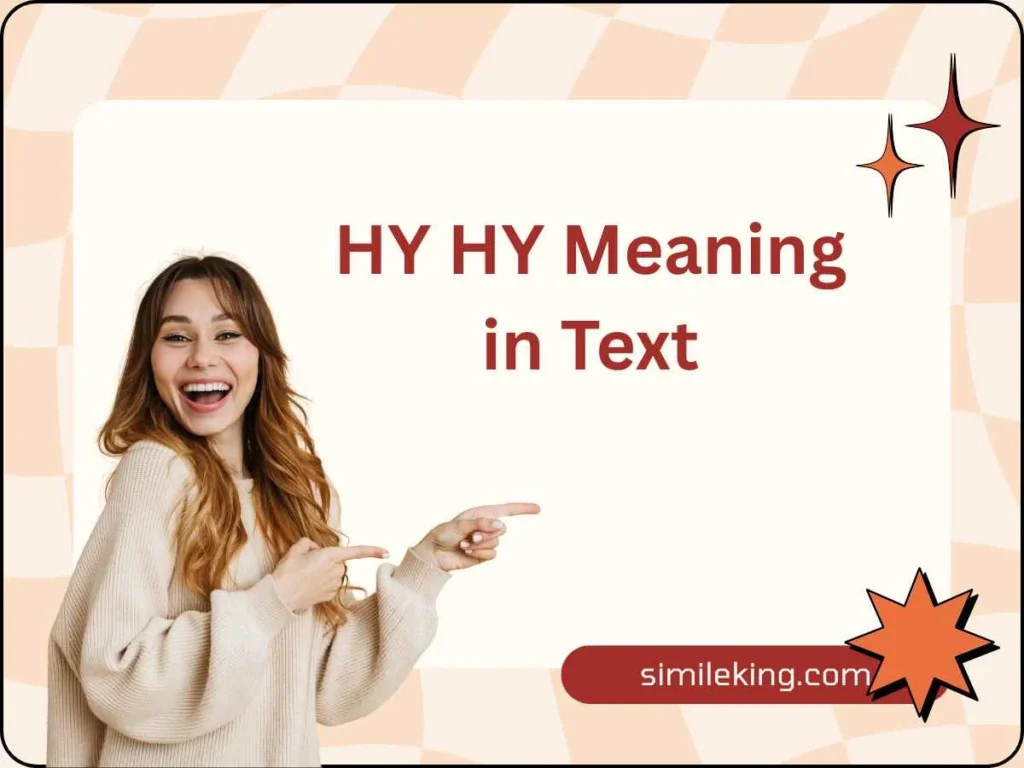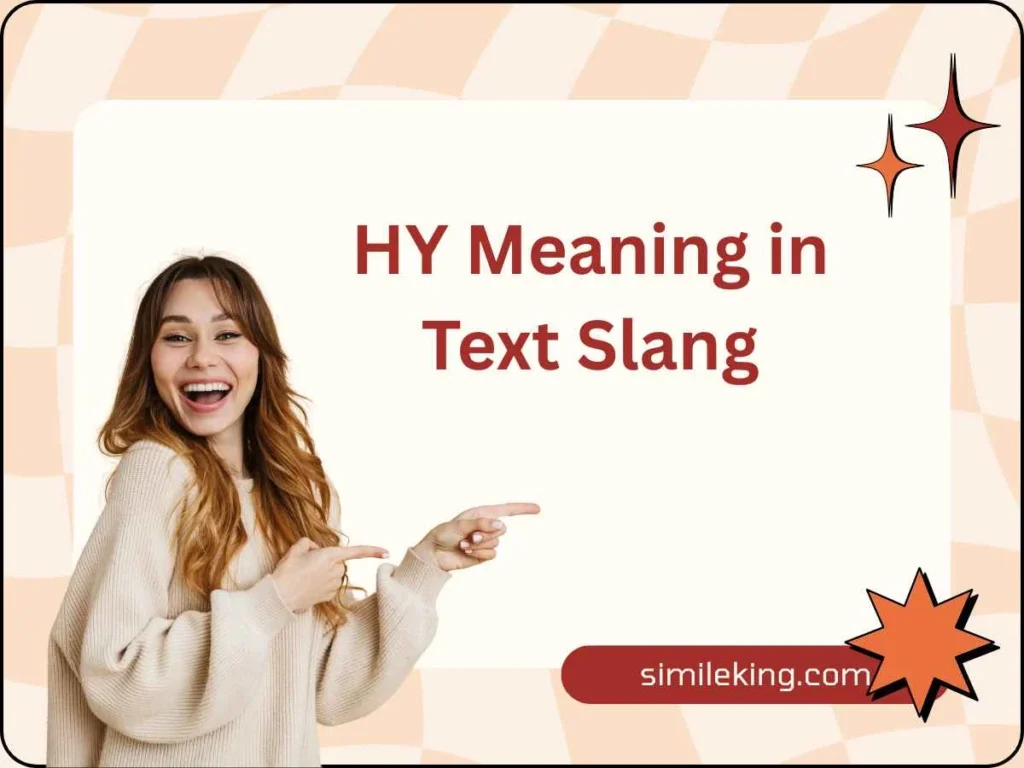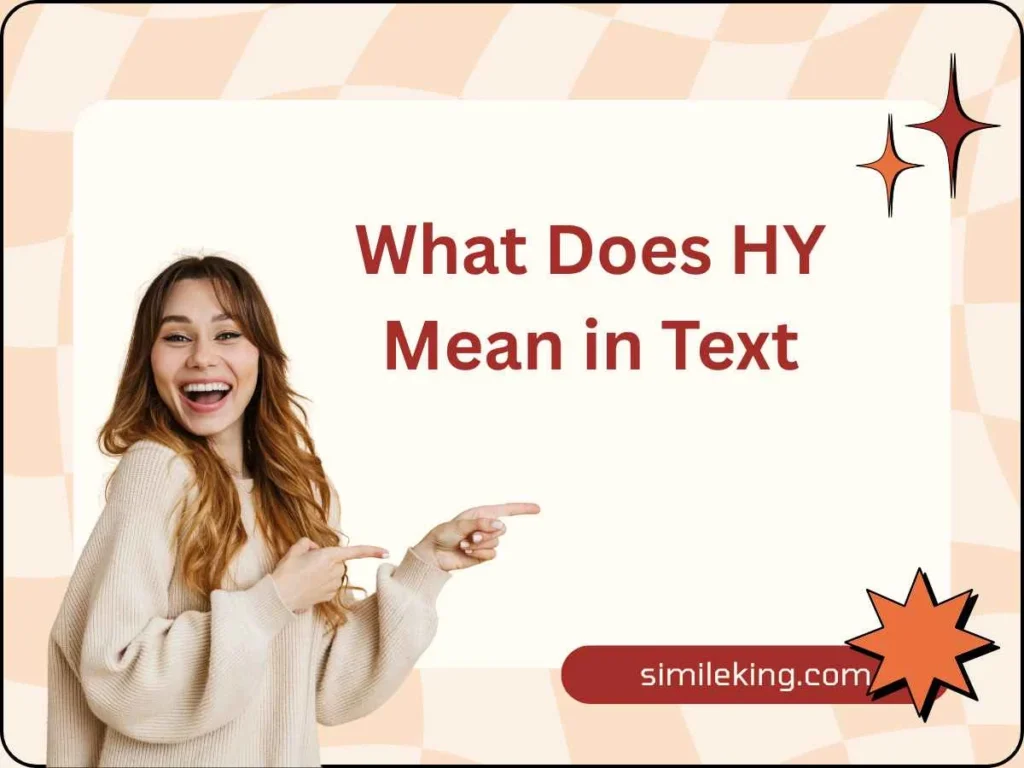In the fast-changing world of digital communication, abbreviations and shortened words have become the backbone of texting culture. Among these is the short and simple “hy”, which many people encounter in casual conversations, social media posts, or instant messaging apps. While it may look like a typo at first glance, “hy” actually carries its own meaning in text, and its interpretation can shift depending on context, tone, and relationship between the people communicating.
In 2025, with online communication growing faster than ever, understanding small text forms like “hy” is more important than it seems. Whether you’re a student, professional, or just someone keeping up with modern slang, knowing what “hy” means in different contexts will help you communicate more effectively.
This article provides a complete guide to:
- What “hy” means in text.
- Its variations and interpretations.
- How context and tone change its meaning.
- Polite, professional, and casual alternatives.
- 10 practical examples of how “hy” is used in real texting scenarios.
- Expert tips on when and when not to use it.
By the end, you’ll not only understand the meaning of “hy” but also be able to choose the best alternative for any situation—whether casual chatting with a friend or reaching out to a colleague in a professional tone.
What Does “Hy” Mean in Text?
At its simplest, “hy” is an informal shorthand for “hi.” It’s often used as a greeting in casual text messages, chats, or comments. However, unlike the standard “hi,” which feels neutral and widely accepted, “hy” tends to come across as:
- Casual → usually sent between friends or acquaintances.
- Playful → sometimes used with emojis or extra letters like “hyy” to soften tone.
- Minimalist → used when someone doesn’t want to type much.
For example:
- “Hy, what’s up?” (informal, friendly)
- “Hy, u there?” (checking availability)
It’s essentially the same as “hi,” but carries a slightly less formal tone, often reflecting relaxed or friendly communication.
How “Hy” Differs from “Hi”
At first glance, “hy” and “hi” look like the same word with a swapped vowel. But in texting, even small differences can change tone.
- Hi → Polite, standard, works in both formal and informal settings.
- Hy → More casual, sometimes appears unpolished or careless depending on context.
Consider this comparison:
- Sending “Hi, Mr. Smith” in a professional email feels respectful.
- Sending “Hy, Mr. Smith” could appear unprofessional or even like a typo.
So, while “hy” works well in casual conversations, it’s better to stick with “hi” or other greetings in professional environments.
Why Do People Use “Hy” in Texts?
The rise of shorthand in texting is driven by speed, convenience, and style. “Hy” is no exception. Here are the most common reasons why people use it:
- Typing Speed → Fewer keystrokes than “hi.”
- Informal Vibe → Conveys a friendly, relaxed start.
- Digital Trend → Younger generations enjoy stylized spelling.
- Casual Check-ins → Often used when simply testing if the other person is online.
- Playfulness → Variations like “hyy” or “hyyy” add a soft, friendly, or flirty tone.
HY Meaning in Text from a Guy

When a guy texts “HY,” it usually stands for “Hey You” or simply “Hey.” It’s often used as a casual greeting, showing interest in starting a conversation. Depending on tone and context, it could mean he’s being friendly, flirty, or just checking in.
HY HY Meaning in Text

Seeing “HY HY” in a text usually emphasizes excitement or energy. It can be read as a playful “Hey hey!”—similar to greeting someone enthusiastically in person.
HY Meaning in Text Slang

In slang, HY is short for “Hey You” or just “Hey.” It’s a quick, informal way of getting someone’s attention over text or chat. Like other slang terms, its exact meaning depends on context, tone, and who’s sending it.
HY Meaning in Text from Girl

If a girl texts “HY,” it typically means “Hey” or “Hey You.” Often, it’s a light, friendly, or flirty greeting. To understand her intent, pay attention to emojis, punctuation, or how often she uses it.
What Does HY Mean in Text?

HY in texting generally means “Hey” or “Hey You.” It’s a shorthand greeting people use when starting a casual conversation. Some may also use it as a fun or playful way to grab attention quickly.
HY Meaning in Text Urban Dictionary
According to Urban Dictionary, HY is most commonly defined as “Hey You.” Some entries also note it can mean “Hell Yeah” in certain contexts, but the texting world mostly uses it as a greeting.
HY Meaning in Text Instagram

On Instagram, HY is often dropped in DMs or comments as a casual way of saying “Hey.” Since IG is a social platform, the term usually carries a relaxed, friendly, or flirty vibe.
HY Meaning in Text Funny
Sometimes, HY is used in a funny or sarcastic way. For example, friends might text “HY” dramatically when pretending to make a grand entrance or to tease someone. It can also be doubled or exaggerated like “HYYYY!” for humor.
Context and Tone: How “Hy” Changes Meaning
The meaning of “hy” in text heavily depends on tone, relationship, and context.
- Friendly Tone → “Hy” can feel warm, especially with emojis.
- Flirty Tone → “Hyy” or “Hy 😉” often used between close friends or partners.
- Neutral Tone → A simple “Hy” can act as a soft opener in casual chat.
- Rude/Cold Tone → Just “Hy.” with no follow-up might seem blunt or uninterested.
This flexibility makes “hy” tricky. Sometimes it feels welcoming, but in the wrong context, it can seem too casual or even dismissive.
Polite, Professional, and Casual Alternatives to “Hy”
While “hy” is perfectly fine for casual chats, there are better alternatives depending on the situation. Below are some refined options:
Polite Alternatives
- Hello
- Hi there
- Good morning / afternoon / evening
- Greetings
Professional Alternatives
- Dear [Name]
- Hello [Name]
- Good day
- I hope this message finds you well
Casual Alternatives
- Hey
- Yo
- Sup
- What’s up
- Heya
These alternatives allow you to adjust your tone depending on audience, setting, and purpose.
10 Examples of “Hy” in Text Conversations
Here are 10 real-world styled examples that show how “hy” is used in texting, with explanations of tone:
- Friendship Starter
- A: Hy!
- B: Hey, long time no talk.
- Checking Availability
- A: Hy, you busy rn?
- B: Not really, what’s up?
- Flirty Vibe
- A: Hy 😉
- B: Oh hey you 😏
- Minimal Greeting
- A: Hy.
- B: …hey? everything ok?
- Work Chat Slip
- A (to boss): Hy sir, I’ll send the file today.
- Boss: (corrects) Please use “Hi” in future messages.
- Social Media Comment
- Post: Just landed in NYC!
- Comment: Hy, welcome back!
- Testing Connection
- A: Hy?
- B: Sorry, bad signal—now I can hear you.
- Morning Greeting
- A: Hy, good morning 🌞
- B: Morning! Hope you slept well.
- Group Chat Entry
- A: Hy guys, what’s the plan for tonight?
- B: Movie and pizza!
- Playful Style
- A: Hyy 😅
- B: Haha, what’s with the extra “y”?
→ Extra letters add humor and warmth.
When to Use and Avoid “Hy”
Best Times to Use “Hy”
- Casual conversations with friends.
- Lighthearted social media chats.
- Playful or flirty texting.
- Quick greetings where tone isn’t critical.
When to Avoid “Hy”
- Professional emails or workplace chats.
- First-time introductions.
- Formal situations (academic, business, or official communication).
- When clarity and respect are important.
If in doubt, stick to “hi” or “hello”—they’re safe everywhere.
Final Thoughts
In texting, “hy” simply means “hi,” but the way it’s received depends on tone, context, and relationship. It’s casual, playful, and friendly, but sometimes too informal for professional or serious situations. By knowing when to use it—and when not to—you can navigate digital conversations smoothly.
Remember: Language evolves with people. What may seem like a small spelling change (“hi” → “hy”) actually reflects the creativity and speed of modern communication in 2025.
If you want to sound approachable and casual, “hy” works fine. But if you’re aiming for professionalism, respect, or clarity, choose a more polished alternative.





